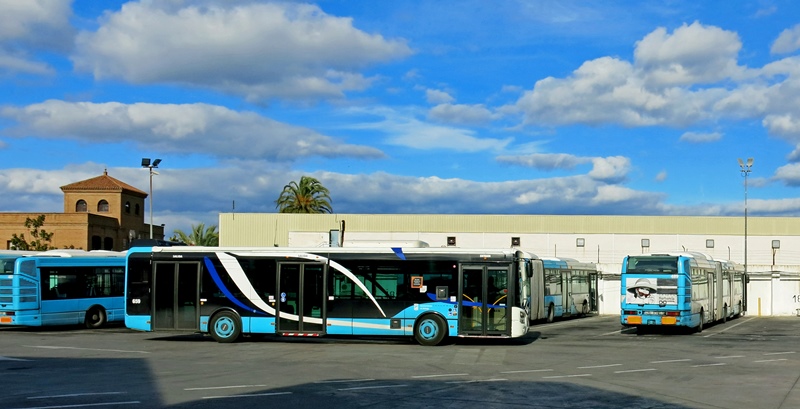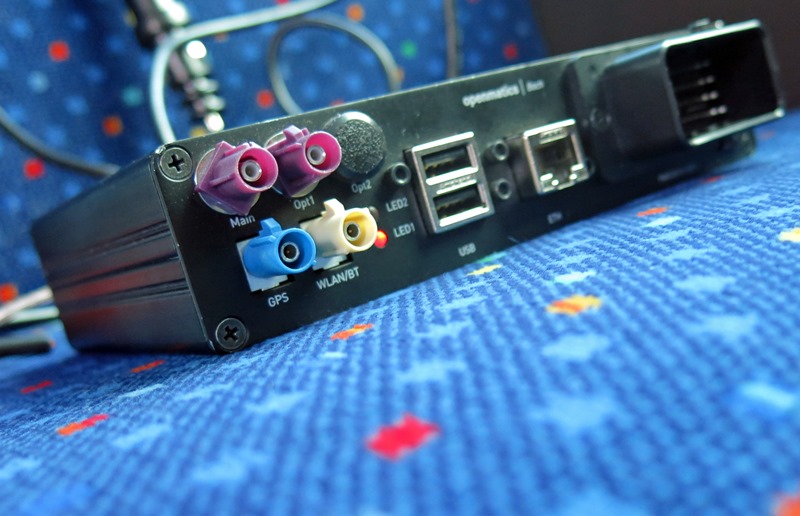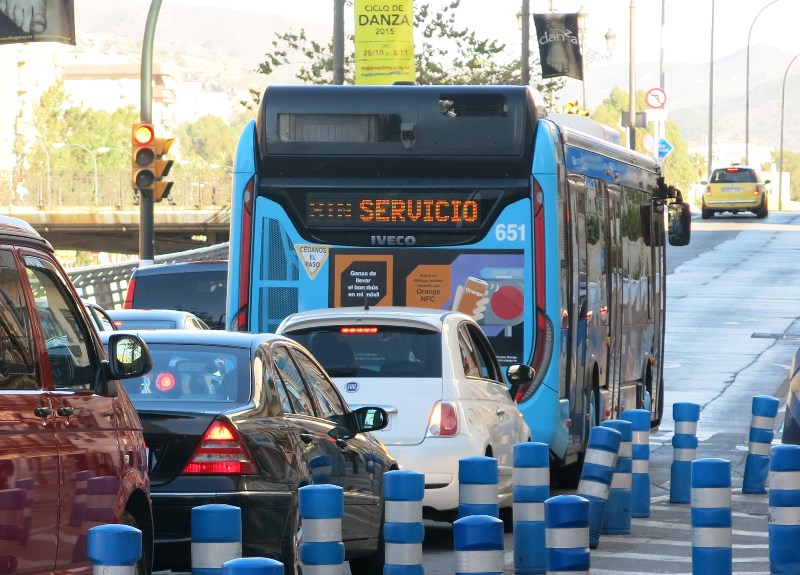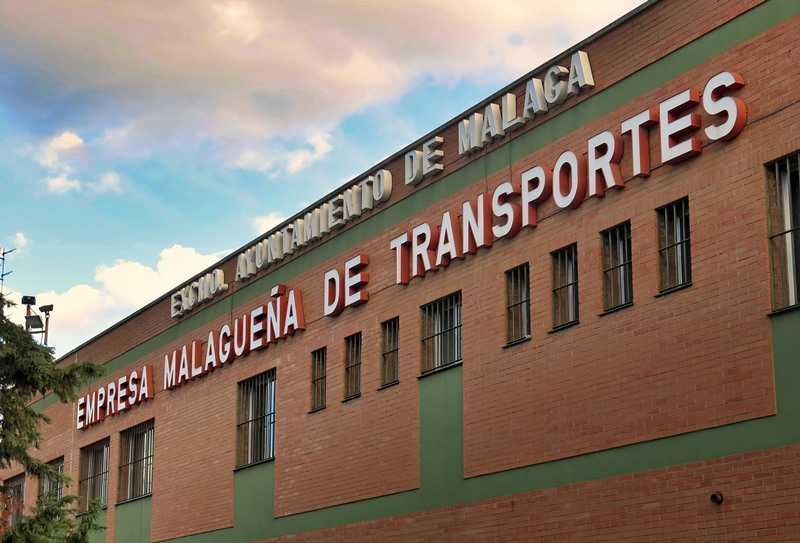Almost all public transport authorities want to increase their efficiency. In order to achieve this, ZF offers route-related driveline consultancy.
The city bus driver is experiencing a slight delay today before commencing with his working day of driving the 228 kW (310 HP) and 1,300 Nm powerful Iveco Urbanway, a Euro-6 model, along his regular route through Málaga. The reason for the delay is the passenger in the seat right behind the driver’s seat, ZF employee Lars Möller. In the right hand, he is holding a green switch, in the left, a laptop. He has already spent approximately an hour connecting his own measuring equipment to the electronic control unit of the bus. When the technician shouts out “o.k.” and uses his thumb to trigger the recording, the driver finally steps on the accelerator pedal.
This unique ZF service called route-related driveline consultancy thus experienced its Spanish premiere. Previously, it had convinced transport companies in Morocco, Russia and Turkey, among others. Within a few hours, the current customer, municipal transport company Empresa Malagueña de Transportes (EMT), will receive precise answers to the following core questions: Are the buses really driving with the optimal axle ratio on this and two other routes? Does this also correspond to the shift program of the ZF-EcoLife automatic transmissions? Or is it advisable to order another, significantly more fuel-saving axle option with the OEM for new vehicle orders down the road? And the most important question: Which axle ratio and which shift program should be selected, exactly?
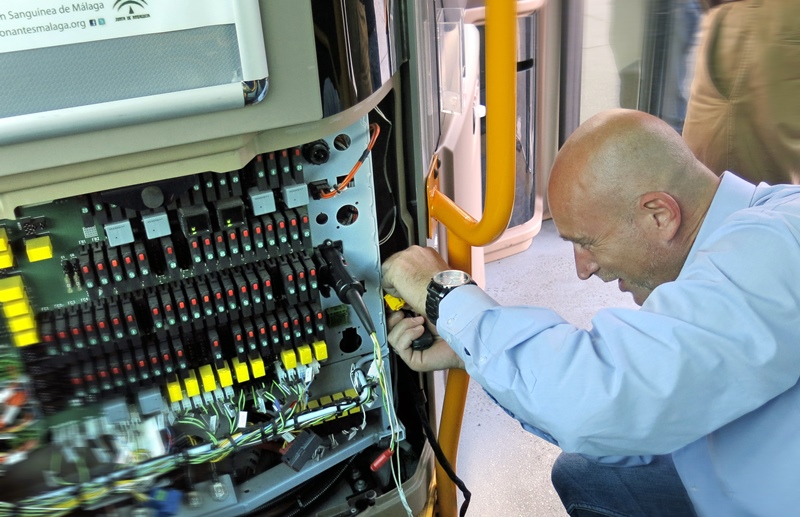
From static to dynamic
The underlying idea behind this additional offer originated four years ago in the ZF Axle & Transmission Systems for Buses & Coaches Business Unit. Engineering technicians such as Lars Möller then systematically pursued this idea with their team until they were able to derive and present this well-engineered and comprehensive service. “In the past, we supported bus fleet operators almost exclusively via remote diagnosis in determining the most ideal axle ratio, for example, statically by analyzing tachograph charts and engine data,” explains Mr. Möller, as he continues to keep an eye on the flood of data on the monitor while driving in the Iveco.
“We’ve recently finished developing all methods and the needed software and hardware tools in order to be the first and to-date only company worldwide to provide route-related driveline consultancy and with it better-founded, absolutely precise on-site analysis, in addition to what we currently supply, by the way” he says.
EMT technical director Fernando Plaza Plaza jumped on the new ZF service offer as soon as he heard about it: “We have great confidence in ZF, this is underscored by our transmission equipment rate of currently more than 70 percent. In addition, we are traditionally open to all innovations that furnish our company with a benefit such as driveline consultancy directly at the company. In addition to the transmissions and axles from ZF, it boosts our efficiency and is a welcome assistance.” This pursuit for increased cost-effectiveness seems even more logical when considering that Málaga’s public transport authority involves a total of 255 buses serving 40 lines, that is approximately 45 million passengers were transported over an impressive 1.15 million kilometers in 2014 alone. Due to the sub-optimal axle ratios, the buses need to cover high mileages with higher fuel consumption over its service life.
Almost 165,000 litres fuel savings per year
At the end of the third day, Mr. Möller has captured all the information he requires. Predominantly data concerning the topography, speed and user profile in addition to the associated GPS, engine and transmission data have now been captured on three different local routes and have already been analyzed. In a nutshell, this data can be summarized as follows. The analyzed routes cover distances from 8.1 to 19.2 kilometers, comprise 38 to 54 stops including bus stops and traffic lights, and vary in average speed from 17 to 29.3 km/h and in maximum speed from 47.7 to 76.2 km/h. The only common feature, the average uphill or downhill gradients are on the same low level. Luckily, in order to determine the most suitable and maximum consumption-reducing axle ratio compromise as quickly as possible on the basis of this complicated information, ZF is able to fall back on a unique instrument, the OASIS simulation software developed solely for this purpose. This software takes into consideration not only the currently recorded data, but also utilizes the digital pool of experience that ZF has cultivated by being the only company to develop and manufacture axle as well as transmission systems for buses.
What were the tangible results with respect to Málaga? The simple fact of changing the axle ratio for buses in the future leads to an average drop in consumption of 1.5% for relatively flat inner-city routes. This may sound negligible to some, but based on the current average total EMT fleet consumption of currently 30,000 litres of diesel fuel daily, this translates to annual savings of 164,250 litres of diesel fuel and thus approximately 433.6 tons fewer CO2 emissions. Reductions of this magnitude are as significant for the urban environment as for operational profitability. Driveline consultant Mr. Möller, who is aware of the full potential of his services, traces the northern horizon of Málaga by making half-circle movements with his arm: “Had the order called for the analysis of less heavily frequented, hilly routes outside the city center, I am certain we would have discovered a savings potential of around four percent.”
